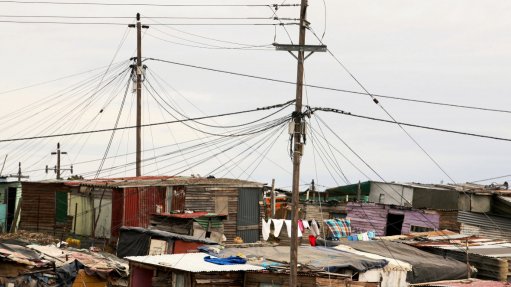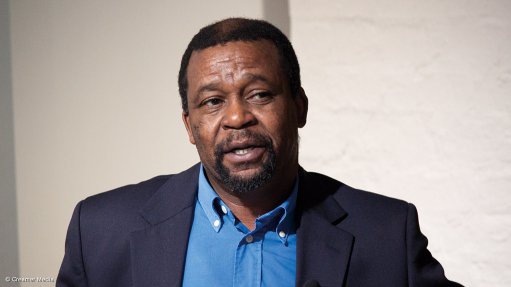DoC ‘dusts off’ DTT plans
The Department of Communications (DoC) digital terrestrial television (DTT) project team was accelerating its efforts to “revive” South Africa’s long anticipated transition from analogue to digital broadcasting.
After a more than six-year delay, the next few weeks were expected to be a hive of activity as the DoC implemented “critical parts of the DTT roadmap” and synchronised the relevant role-players’ plans with the newly gazetted Broadcasting Digital Migration (BDM) policy.
The DoC, which had taken over responsibility for the multibillion-rand project in November, was engaging manufacturers and broadcasters, as well as the Independent Communications Authority of South Africa (Icasa), signal distributor Sentech, the South African Post Office (Sapo), the Universal Service Access Agency of South Africa (Usaasa) and the South African Bureau of Standards (SABS).
DoC DTT programme head Solly Mokoetle told Engineering News Online that most of the stakeholders were ready to move forward with the transition; however, there was a need to “dust off” and adjust plans after the multiyear delay in the deployment of DTT.
“The policies are now done … [it is] time for implementation,” he said.
However, with South Africa set to miss the International Telecommunications Union- (ITU-) stipulated deadline of June 17 for the switch to digital signals, the biggest challenge would be mitigating the after-effects of that failure.
After the deadline, ITU would lift its protection of South Africa’s analogue frequencies, meaning that the country would no longer be protected against disruptions of the radio waves that were used for analogue television broadcasts.
Various potential mitigating solutions were being mulled, with the possibility of a Ministerial summit being held to that effect.
The DoC was working to secure high-level cooperation with Ministers from Namibia, Botswana, Lesotho, Swaziland, Mozambique and Zimbabwe to harmonise the switchovers and release of digital dividend to limit broadcasting inference from neighbouring countries.
Regulators from South Africa and its neighbours were currently meeting in Mozambique to map out regulatory options to mitigate the interruptions expected after the deadline.
Sentech, which had achieved 100% geographic signal coverage, with 84% of the population covered, and was currently working to ensure the system was stabilised and robust, would also provide mitigation measures from a technical perspective.
“It’s [going to be] like preparing for the Y2K [the year 2000 millennial transition] - you never knew what was going to happen,” Mokoetle commented.
Owing to the missed deadline, the digital switch-on and analogue switch-off would need to start at the borderline regions – the regions most vulnerable to broadcasting interruptions – which was an adjustment from initial plans of starting the digital transition inland.
“It is a method to buy time,” Mokoetle said, as the DoC worked to distribute free set-top boxes (STBs), which were required to intercept digital broadcasting frequencies, to five-million of South Africa’s poorest TV-owning households.
He added that, by next week, the department would have determined which town and which transmitter to switch off first, as well as which areas to distribute the required STBs to first, once the much-anticipated tender was awarded.
Usaasa was expected to select a winning bidder to manufacture and supply the government-subsidised STBs in April.
However, Mokoetle believed that Usaasa had “jumped the gun” in issuing the tender before the BDM policy and certain STB specifications attached to it, particularly that of the decision to include a control system without conditional access, was finalised.
However, he pointed out that the move had some useful gains, with the department now aware of how many potential STB manufacturers there were in South Africa, their capabilities and the potential pricing of STBs, which was not yet finalised.
The DoC was working with the SABS to finalise the SANS 862 direct-to-home (DTH) satellite STB specifications for DTT transmissions by April.
DTH would service hard-to-reach regions for which the deployment of terrestrial connection was deemed uneconomical.
The terrestrial STB standards were already finalised, which allowed manufacturers to move ahead.
Meanwhile, it was determined that Sapo needed to return to the drawing board for its STB distribution plan as it was deemed too elaborate.
Sapo had designed a delivery system based on a partially subsidised STB – dependent on DTH or DTT units – which resulted in a plan too “complex and expensive” for the now-free STBS.
Government initially aimed to subsidise up to 66% of the price of a DTT STB and up to 77% of the price of DTH STBs.
Usaasa was also fine-tuning the identification of the qualifying households, using the Mean test, data from Statistics South Africa and Department of Social Development grant information, besides others.
Comments
Press Office
Announcements
What's On
Subscribe to improve your user experience...
Option 1 (equivalent of R125 a month):
Receive a weekly copy of Creamer Media's Engineering News & Mining Weekly magazine
(print copy for those in South Africa and e-magazine for those outside of South Africa)
Receive daily email newsletters
Access to full search results
Access archive of magazine back copies
Access to Projects in Progress
Access to ONE Research Report of your choice in PDF format
Option 2 (equivalent of R375 a month):
All benefits from Option 1
PLUS
Access to Creamer Media's Research Channel Africa for ALL Research Reports, in PDF format, on various industrial and mining sectors
including Electricity; Water; Energy Transition; Hydrogen; Roads, Rail and Ports; Coal; Gold; Platinum; Battery Metals; etc.
Already a subscriber?
Forgotten your password?
Receive weekly copy of Creamer Media's Engineering News & Mining Weekly magazine (print copy for those in South Africa and e-magazine for those outside of South Africa)
➕
Recieve daily email newsletters
➕
Access to full search results
➕
Access archive of magazine back copies
➕
Access to Projects in Progress
➕
Access to ONE Research Report of your choice in PDF format
RESEARCH CHANNEL AFRICA
R4500 (equivalent of R375 a month)
SUBSCRIBEAll benefits from Option 1
➕
Access to Creamer Media's Research Channel Africa for ALL Research Reports on various industrial and mining sectors, in PDF format, including on:
Electricity
➕
Water
➕
Energy Transition
➕
Hydrogen
➕
Roads, Rail and Ports
➕
Coal
➕
Gold
➕
Platinum
➕
Battery Metals
➕
etc.
Receive all benefits from Option 1 or Option 2 delivered to numerous people at your company
➕
Multiple User names and Passwords for simultaneous log-ins
➕
Intranet integration access to all in your organisation


















